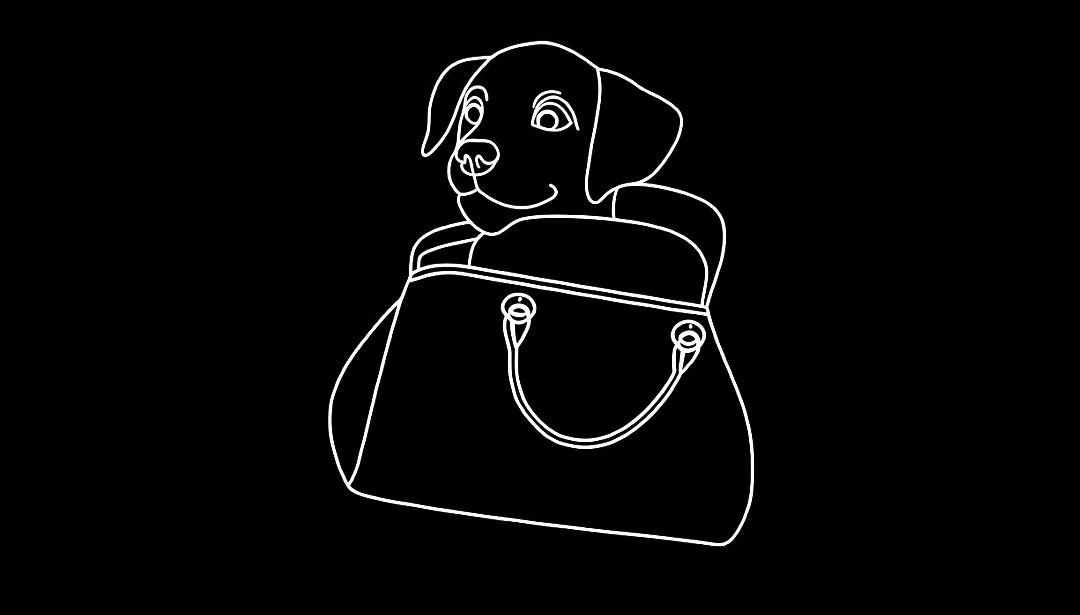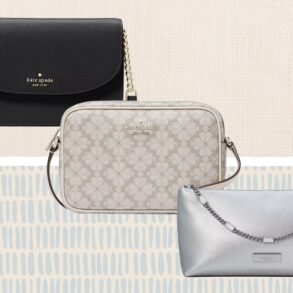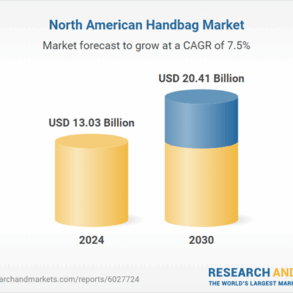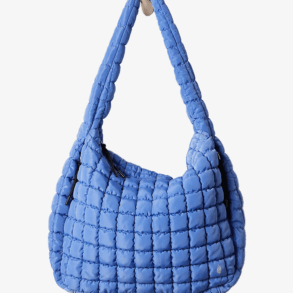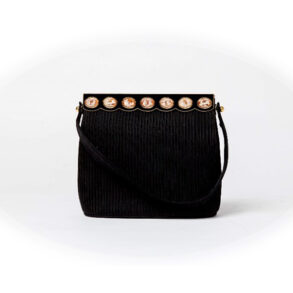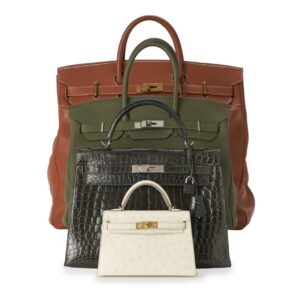Apr 8, 2025
IndexBox has just published a new report: U.S. – Handbags – Market Analysis, Forecast, Size, Trends And Insights.
The handbag market in the United States is forecast to see growth in both volume and value terms from 2024 to 2035, with a projected CAGR of +0.6% for volume and +2.9% for value. This growth is fueled by rising demand for handbags, leading to an anticipated market volume of 263M units and a market value of $5.2B by the end of 2035.
Market Forecast
Driven by rising demand for handbag in the United States, the market is expected to start an upward consumption trend over the next decade. The performance of the market is forecast to increase slightly, with an anticipated CAGR of +0.6% for the period from 2024 to 2035, which is projected to bring the market volume to 263M units by the end of 2035.
In value terms, the market is forecast to increase with an anticipated CAGR of +2.9% for the period from 2024 to 2035, which is projected to bring the market value to $5.2B (in nominal wholesale prices) by the end of 2035.

Consumption
United States’s Consumption of Handbags
In 2024, handbag consumption in the United States rose notably to 247M units, with an increase of 12% against the previous year’s figure. In general, consumption, however, showed a relatively flat trend pattern. Handbag consumption peaked at 292M units in 2022; however, from 2023 to 2024, consumption stood at a somewhat lower figure.
The size of the handbag market in the United States reached $3.8B in 2024, approximately equating the previous year. This figure reflects the total revenues of producers and importers (excluding logistics costs, retail marketing costs, and retailers’ margins, which will be included in the final consumer price). The market value increased at an average annual rate of +2.1% over the period from 2013 to 2024; however, the trend pattern indicated some noticeable fluctuations being recorded in certain years. Over the period under review, the market reached the maximum level at $4.6B in 2022; however, from 2023 to 2024, consumption stood at a somewhat lower figure.
Production
United States’s Production of Handbags
In 2024, approx. 15M units of handbags were produced in the United States; shrinking by -3.8% on the previous year. Over the period under review, production, however, recorded a relatively flat trend pattern. The pace of growth was the most pronounced in 2020 when the production volume increased by 21% against the previous year. As a result, production reached the peak volume of 18M units. From 2021 to 2024, production growth failed to regain momentum.
In value terms, handbag production dropped modestly to $335M in 2024. The total output value increased at an average annual rate of +1.1% over the period from 2013 to 2024; the trend pattern remained relatively stable, with only minor fluctuations being recorded throughout the analyzed period. The most prominent rate of growth was recorded in 2015 when the production volume increased by 8.8%. Over the period under review, production reached the peak level at $356M in 2018; however, from 2019 to 2024, production remained at a lower figure.
Imports
United States’s Imports of Handbags
In 2024, the amount of handbags imported into the United States stood at 246M units, increasing by 9.5% on 2023. Overall, imports, however, saw a relatively flat trend pattern. The most prominent rate of growth was recorded in 2021 when imports increased by 45% against the previous year. Over the period under review, imports reached the maximum at 295M units in 2022; however, from 2023 to 2024, imports remained at a lower figure.
In value terms, handbag imports shrank slightly to $3.9B in 2024. The total import value increased at an average annual rate of +2.2% over the period from 2013 to 2024; however, the trend pattern indicated some noticeable fluctuations being recorded in certain years. The most prominent rate of growth was recorded in 2021 with an increase of 47% against the previous year. Imports peaked at $4.7B in 2022; however, from 2023 to 2024, imports remained at a lower figure.
Imports By Country
China (93M units), Cambodia (50M units) and Vietnam (17M units) were the main suppliers of handbag imports to the United States, with a combined 71% share of total imports. India, Myanmar, Indonesia, Italy and the Philippines lagged somewhat behind, together accounting for a further 18%.
From 2013 to 2023, the most notable rate of growth in terms of purchases, amongst the main suppliers, was attained by Myanmar (with a CAGR of +128.3%), while imports for the other leaders experienced more modest paces of growth.
In value terms, the largest handbag suppliers to the United States were Italy ($1.2B), Cambodia ($595M) and China ($382M), with a combined 55% share of total imports. Vietnam, Indonesia, the Philippines, India and Myanmar lagged somewhat behind, together comprising a further 18%.
In terms of the main suppliers, Myanmar, with a CAGR of +84.5%, recorded the highest rates of growth with regard to the value of imports, over the period under review, while purchases for the other leaders experienced more modest paces of growth.
Imports By Type
In 2024, handbags with outer surface of plastic sheeting or of textile materials (195M units) constituted the largest type of handbags supplied to the United States, with a 83% share of total imports. Moreover, handbags with outer surface of plastic sheeting or of textile materials exceeded the figures recorded for the second-largest type, handbags with outer surface of leather, composition leather, or patent leather (28M units), sevenfold.
From 2013 to 2024, the average annual growth rate of the volume of handbags with outer surface of plastic sheeting or of textile materials imports was relatively modest. With regard to the other supplied products, the following average annual rates of growth were recorded: handbags with outer surface of leather, composition leather, or patent leather (-0.1% per year) and handbags with outer surface of vulcanised fibre or of paperboard (+11.3% per year).
In value terms, handbags with outer surface of leather, composition leather, or patent leather ($2.2B), handbags with outer surface of plastic sheeting or of textile materials ($1.6B) and handbags with outer surface of vulcanised fibre or of paperboard ($26M) were the most imported types of handbags in the United States.
Among the main product categories, handbags with outer surface of vulcanised fibre or of paperboard, with a CAGR of +6.2%, saw the highest rates of growth with regard to the value of imports, over the period under review, while purchases for the other products experienced more modest paces of growth.
Import Prices By Type
The average handbag import price stood at $16 per unit in 2024, dropping by -9.3% against the previous year. Over the last eleven-year period, it increased at an average annual rate of +2.3%. The most prominent rate of growth was recorded in 2020 when the average import price increased by 19% against the previous year. Over the period under review, average import prices hit record highs at $17 per unit in 2023, and then contracted in the following year.
There were significant differences in the average prices amongst the major supplied products. In 2024, the product with the highest price was handbags with outer surface of leather, composition leather, or patent leather ($79 per unit), while the price for handbags with outer surface of vulcanised fibre or of paperboard ($2.4 per unit) was amongst the lowest.
From 2013 to 2024, the most notable rate of growth in terms of prices was attained by handbags with outer surface of leather, composition leather, or patent leather (+3.4%), while the prices for the other products experienced mixed trend patterns.
Import Prices By Country
The average handbag import price stood at $17 per unit in 2023, growing by 10% against the previous year. Over the period from 2013 to 2023, it increased at an average annual rate of +3.5%. The most prominent rate of growth was recorded in 2020 when the average import price increased by 19% against the previous year. The import price peaked in 2023 and is likely to see gradual growth in years to come.
Prices varied noticeably by country of origin: amid the top importers, the country with the highest price was Italy ($234 per unit), while the price for Myanmar ($2.6 per unit) was amongst the lowest.
From 2013 to 2023, the most notable rate of growth in terms of prices was attained by Cambodia (+7.5%), while the prices for the other major suppliers experienced more modest paces of growth.
Exports
United States’s Exports of Handbags
In 2024, shipments abroad of handbags decreased by -31% to 14M units for the first time since 2020, thus ending a three-year rising trend. In general, exports continue to indicate a relatively flat trend pattern. The pace of growth appeared the most rapid in 2015 when exports increased by 28%. As a result, the exports reached the peak of 21M units. From 2016 to 2024, the growth of the exports failed to regain momentum.
In value terms, handbag exports dropped to $379M in 2024. The total export value increased at an average annual rate of +2.2% over the period from 2013 to 2024; however, the trend pattern indicated some noticeable fluctuations being recorded in certain years. The pace of growth was the most pronounced in 2022 when exports increased by 25%. Over the period under review, the exports reached the peak figure at $443M in 2018; however, from 2019 to 2024, the exports stood at a somewhat lower figure.
Exports By Country
Canada (14M units) was the main destination for handbag exports from the United States, with a 70% share of total exports. Moreover, handbag exports to Canada exceeded the volume sent to the second major destination, Mexico (1.4M units), tenfold. The third position in this ranking was held by China (517K units), with a 2.6% share.
From 2013 to 2023, the average annual growth rate of volume to Canada amounted to +5.3%. Exports to the other major destinations recorded the following average annual rates of exports growth: Mexico (-2.6% per year) and China (+15.6% per year).
In value terms, Canada ($173M) remains the key foreign market for handbags exports from the United States, comprising 39% of total exports. The second position in the ranking was taken by China ($34M), with a 7.7% share of total exports. It was followed by Japan, with a 4.9% share.
From 2013 to 2023, the average annual rate of growth in terms of value to Canada amounted to +3.5%. Exports to the other major destinations recorded the following average annual rates of exports growth: China (+21.6% per year) and Japan (-11.5% per year).
Exports By Type
Handbags with outer surface of plastic sheeting or of textile materials (8.9M units) was the largest type of handbags exported from the United States, accounting for a 64% share of total exports. Moreover, handbags with outer surface of plastic sheeting or of textile materials exceeded the volume of the second product type, handbags with outer surface of leather, composition leather, or patent leather (3.5M units), threefold.
From 2013 to 2024, the average annual rate of growth in terms of the volume of handbags with outer surface of plastic sheeting or of textile materials exports was relatively modest. With regard to the other exported products, the following average annual rates of growth were recorded: handbags with outer surface of leather, composition leather, or patent leather (+0.3% per year) and handbags with outer surface of vulcanised fibre or of paperboard (+0.6% per year).
In value terms, handbags with outer surface of leather, composition leather, or patent leather ($234M), handbags with outer surface of plastic sheeting or of textile materials ($131M) and handbags with outer surface of vulcanised fibre or of paperboard ($26M) appeared to be the most exported types of handbags from the United States worldwide.
In terms of the main product categories, handbags with outer surface of leather, composition leather, or patent leather, with a CAGR of +4.4%, saw the highest rates of growth with regard to the value of exports, over the period under review, while shipments for the other products experienced mixed trend patterns.
Export Prices By Type
The average handbag export price stood at $28 per unit in 2024, jumping by 25% against the previous year. Over the period from 2013 to 2024, it increased at an average annual rate of +2.8%. As a result, the export price attained the peak level and is likely to continue growth in the immediate term.
There were significant differences in the average prices for the major types of exported product. In 2024, the product with the highest price was handbags with outer surface of leather, composition leather, or patent leather ($68 per unit), while the average price for exports of handbags with outer surface of plastic sheeting or of textile materials ($15 per unit) was amongst the lowest.
From 2013 to 2024, the most notable rate of growth in terms of prices was recorded for the following types: handbags with outer surface of leather, composition leather, or patent leather (+4.1%), while the prices for the other products experienced mixed trend patterns.
Export Prices By Country
In 2023, the average handbag export price amounted to $22 per unit, dropping by -5.8% against the previous year. In general, the export price, however, recorded a relatively flat trend pattern. The most prominent rate of growth was recorded in 2022 when the average export price increased by 16%. As a result, the export price attained the peak level of $24 per unit, and then shrank in the following year.
There were significant differences in the average prices for the major foreign markets. In 2023, amid the top suppliers, the country with the highest price was Japan ($99 per unit), while the average price for exports to Mexico ($11 per unit) was amongst the lowest.
From 2013 to 2023, the most notable rate of growth in terms of prices was recorded for supplies to Mexico (+8.1%), while the prices for the other major destinations experienced more modest paces of growth.
Source: IndexBox Market Intelligence Platform
This post was originally published on this site be sure to check out more of their content.
